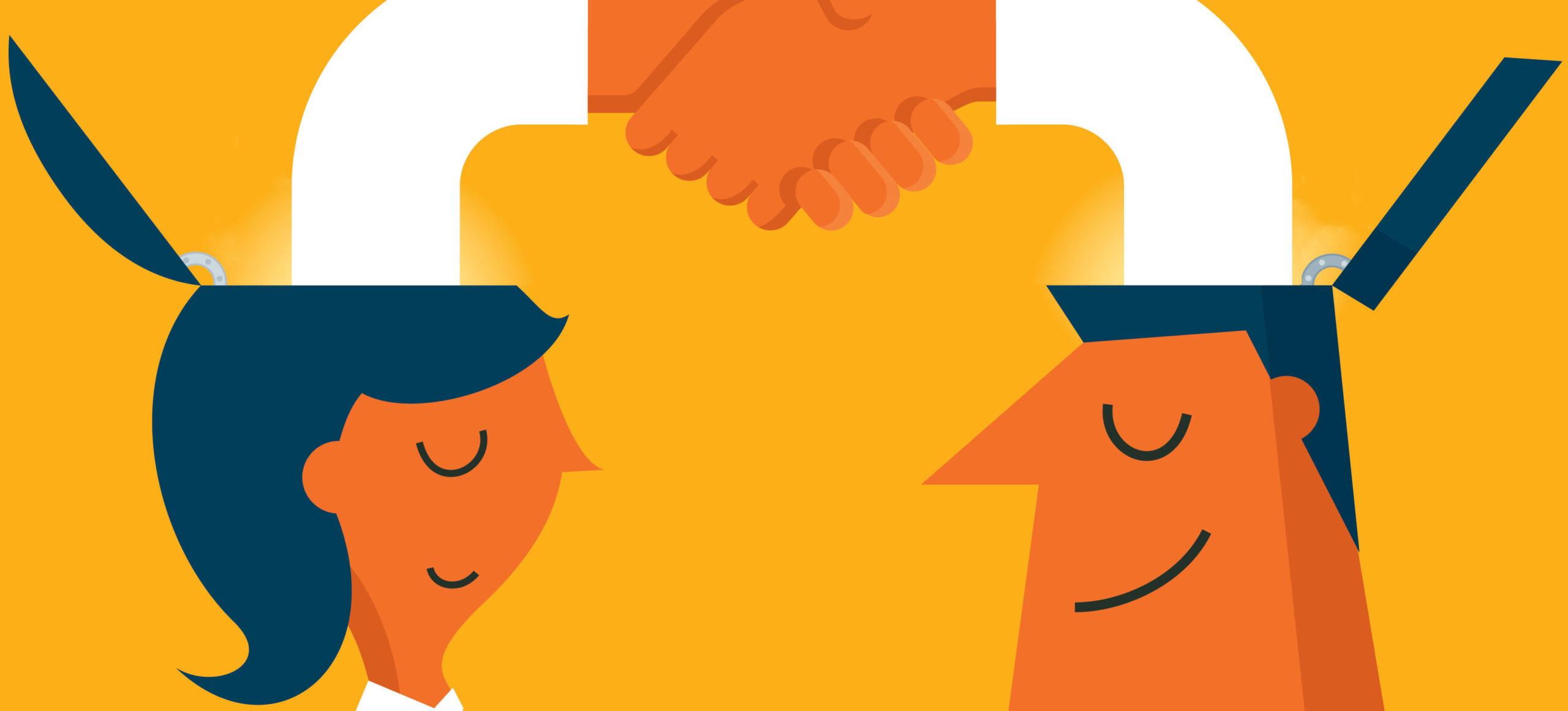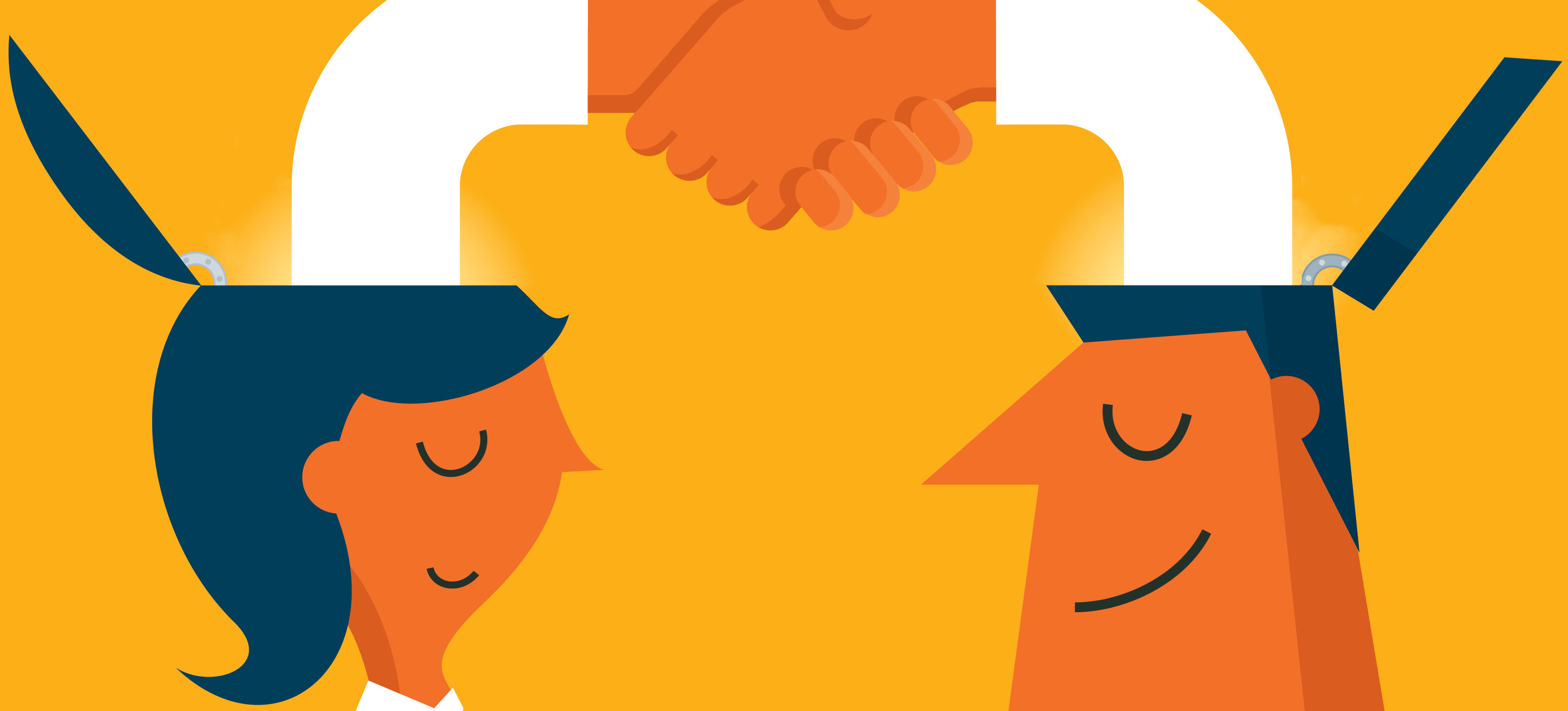Master the science of face-to-face encounters
You have seen it a million times. Attendees file into the opening reception. They smile at each other, shake hands, clink glasses, exchange names and small talk. Where do you live, work, play? How was your flight? Seems simple, right? But behind the scenes what is going on in all those brains actually resembles an electrochemistry lab and can literally change neurological patterns in ways not possible through email, phone calls—or even the most animated Zoom teleconference. Here is what science says is actually happening in that ballroom—and how you can make sure all the right synapses are firing.
More: Conferences Are a Zoo, Here’s How to Get All the Animals to Show Up
A MultiSensual Orchestra

Romilia “Dr. Romie” Mushtaq, a neurologist and chief wellness officer for Evolution Hospitality, says that the power of engaging all the senses at a face-to-face meeting—personally and professionally—is exponentially greater than what can be experienced any other way. This transformational effect is directly related to how we are wired biologically. When all senses are engaged, more of our emotional center, the almond-shaped amygdala, becomes engaged. Stronger relationships are built when multisensory experiences stimulate the emotional center of our brains because we can interpret body language, tone of voice, even the sense of shared taste and smell.
“We don’t actually connect because of spread sheets,” Mushtaq says. The core psychology of any human interaction is that people want to feel seen and heard, whether you agree with them or not. Sending signals that you are really listening—focusing the eyes, mirroring movements and aligning speech patterns—can help you connect in an authentic way.
And understanding the science behind how all the senses play into a harmonious bonding can set the stage for meaningful encounters.
Touch
A handshake activates pacinian corpuscles, receptors in the palm, that travel through the mesolimbic pathway to the what is known as the vagus nerve, which can decrease the stress hormone cortisol, according to researchers at DePauw University. It also releases oxytocin—the cuddle hormone.
The kinetic energy generated in a simple handshake can have powerful emotional results. Researchers at University of Chicago and Harvard Business School found that shaking hands results in more cooperation, open and honest actions, and better outcomes for the parties involved—even when their interests are not otherwise aligned.
Sight
Visual responses can also push attendee’s trust buttons. When we are up-close-and-personal with someone, we can observe subtle, often subconscious cues that our instinctive brain processes in a flash—making a call about whether we like or don’t like (read: do or don’t want to do business with) someone.
Before we even begin conversing, our brains make assumptions based on body language. UCLA researchers concluded that 55 percent of communication comes from body cues (another 38 percent comes from tone of voice, which we will discuss later, and only 7 percent from actual words spoken). Crossed arms and legs may signal resistance, while posture indicates status and power—all messages that are transformed into judgments in the blink of an eye.
Looking into someone’s eyes can be even more revealing. When people are genuinely happy, pupils dilate and muscles around the eyes contract, materializing in laugh lines. When someone is unhappy, pupils constrict, and muscles between the eyes remain slack. Even if the other person attempts a smile, our brains throw up yellow flags. We may not consciously realize why we are feeling cautious, but we are.
Emotions can be contagious. As a result of what the scientist Giacomo Rizzolatti calls mirror neurons, our brains automatically send out signals when we see a smiling face. Muscles around our mouths and eyes start to contract. Alternatively, if a person begins looking over your shoulder or checking a device for status updates, your brain signals for you to look for another partner.
Sound
Once our potential businesses partners open their mouths to speak, our mental analyst comes to a whole new set of conclusions. Researchers from California State University, Fresno found that in pleasant conversations, the pitch of the last word of your sentence resonates with the first word of the other person’s response. Even pauses between statements can speak volumes. Again, we don’t need to be aware we are dissecting every syllable to make a snap decision whether to continue the conversation or politely excuse ourselves to find the bar.
Present Tense
With all these messages coursing through our nervous system, Mushtaq advises practicing “mindful attendance.” Trying to simultaneously pay attention to a speaker, respond to the person in the next seat, check e-mail and eat that bruschetta without spilling down the front of your blouse or shirt can lead to woeful misunderstandings—and a stain that can’t be removed.
Mushtaq calls the jumble of thoughts we wrestle with constantly “busy brain syndrome” and says it is common with people in many industries. But planners, in particular, feel they have to be available at all times, and ready to respond immediately. The fear of missing out forces us to try to be on 24/7 and leaves us distracted during intense projects that require deep thinking.
“Multitasking is a misnomer,” Mushtaq says. Research from Carnegie Mellon University’s Human-Computer Interaction Lab shows that, in most situations, the brain is actually rapid-toggling between tasks—an activity that is inefficient and prone to inducing errors.
Distracted participation—something all too common on conference calls, when the temptation to quickly check email can be very powerful—negatively impacts the mind’s ability to learn and remember. When multitasking, we are limiting the ability of our intermediate memory to transfer data into our long-term memory. “Our brains need time to file the information and store it while we are sleeping,” Mushtaq says. If we are pulling weeds while listening to the sales report, we won’t be able to retrieve that information when we need it.
Researchers studying MRIs of people interrupted while trying to focus on a cognitive task found heightened activity in the basal ganglia, the part of the brain that plays a key role in coordination. When that mental control tower is stressed out, wires can get crossed, and things can go wrong.
Mushtaq stresses that the brain can change—“rewire”—the way it functions, altering its very structure, depending how it is trained and stimulated. Practicing daily gratitude, mindful breathing and focus can lead to more direct paths to productive patterns of thought. Mindful breathing can stimulate the amygdala and shift the brain from a stress response to a calm and receptive state—a much more productive place to be during an event. “Mindfulness teaches present-centered awareness, celebrates gratitude, prepares us for challenges and leaves us hungry for more,” Mushtaq says.
3-Minute Group Breathing Exercise

The group that breathes together, learns together. That is the theory behind Romilia “Dr. Romie” Mushtaq’s call for inserting mindfulness-based exercises into agendas. Here’s how to create a three-minute group breathing exercise.
1. Call for a device-free zone. Smartphones, smartwatches and laptops can interrupt our train of thought, making us distracted and irritable. Anyone can be offline for three minutes.
2. Get team leaders to buy into participating, as this will encourage others to participate.
3. Start with quiet and observation. Instruct participants not to try controlling their breath at first; just listen to the body without judgment.
4. Start intentional breathing by having participants inhale slowly through the nose until lungs are full, about four seconds, then hold for seven seconds and breathe out through the mouth for eight seconds. Repeat.
5. Suggest that they check in with their bodies to see if they are holding tension anywhere; allow relaxation with the outflow of breath.
6. Let them know it is OK if the mind wanders from the breath. If they notice they have started thinking about something else, gently bring focus back to the breathing.
7. After three minutes, suggest that they seal the practice with a word, an intention or a thought.
8. Get down to business.
Because they performed a ritual together, a breath break makes everyone feels part of the team—and everyone can breathe!






